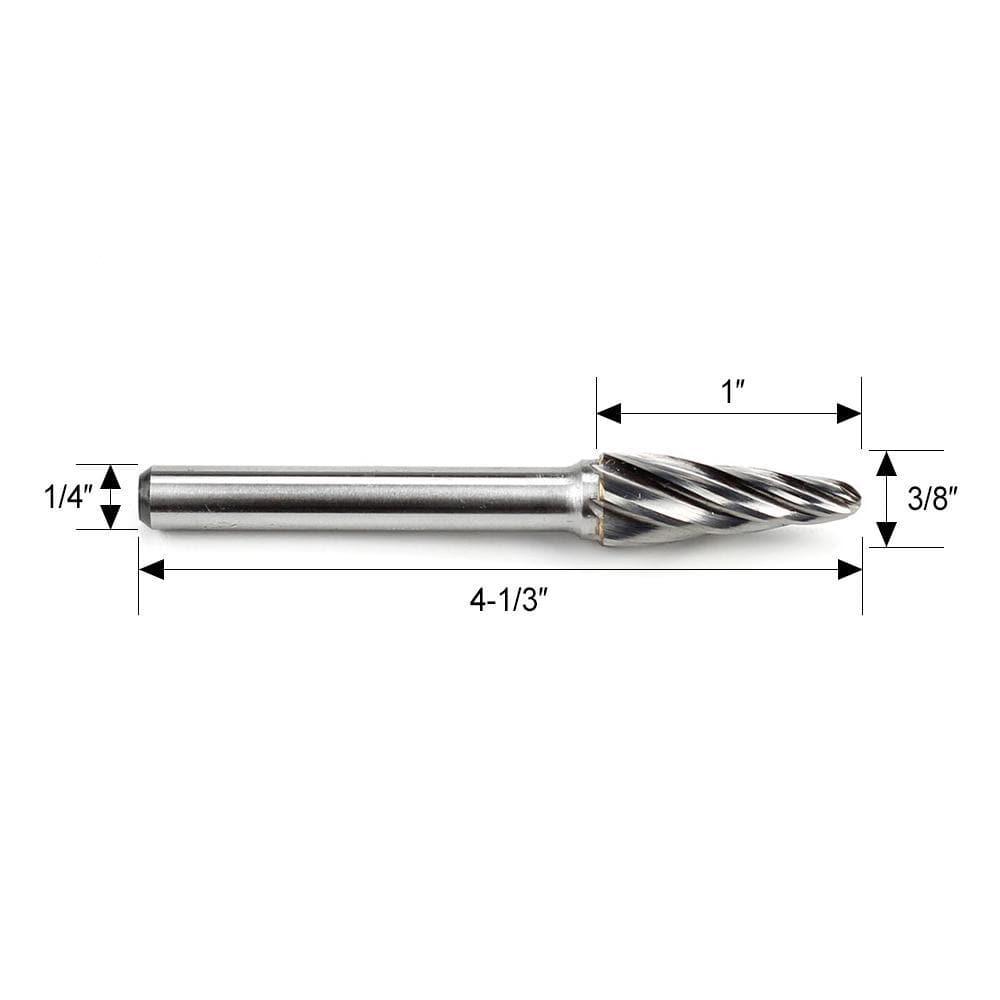Overview of cone radius end carbide burrs
A cone radius end carbide burr, also known as a cone-shaped carbide burr or a taper radius end burr, is a type of rotary cutting tool used in metalworking, woodworking, and other industries. It is designed for removing material, shaping, deburring, and creating contours or chamfers on various materials, including metals, plastics, and wood.
Here are some key characteristics and features of a cone radius end carbide burr:
1. Shape: A cone radius end carbide burr has a tapered cone-shaped head with a rounded end. The cone tapers gradually from the base to the tip, forming a rounded edge or radius at the end. The taper allows for easy access to narrow or confined areas, while the rounded end helps prevent excessive cutting or gouging.
2. Cutting Flutes: The cone radius end burr has multiple cutting flutes or teeth positioned along the body of the burr. These flutes are spiral-shaped grooves that provide cutting edges for material removal. The number and arrangement of flutes can vary, affecting the cutting efficiency and the type of material the burr is best suited for.
3. Carbide Material: Carbide burrs are typically made from tungsten carbide, a hard and durable material that offers excellent cutting performance and longevity. The carbide material enables the burr to withstand high-speed rotation and maintain sharpness even when used on tough materials.
4. Shank: The shank of a cone radius end carbide burr is the cylindrical portion that is inserted into a rotary tool, such as a die grinder or a pneumatic tool. The shank is usually equipped with a standard-sized shaft, such as 1/4 inch (6.35 mm) or 1/8 inch (3.175 mm), allowing compatibility with various rotary tools.

Applications of cone radius end carbide burrs:
When using a cone radius end carbide burr , it's important to follow proper safety precautions, such as wearing protective eyewear, gloves, and ensuring the workpiece is securely clamped. Proper speed and technique are essential to achieve desired results and prevent overheating or excessive material removal.
Note: It's worth mentioning that the term "carbide burr" is often used interchangeably with "carbide rotary file" or "carbide rotary cutter."